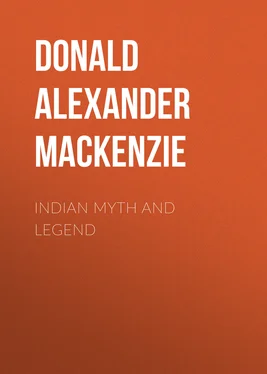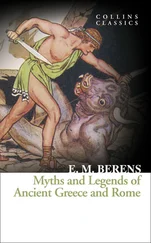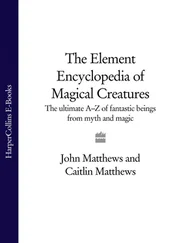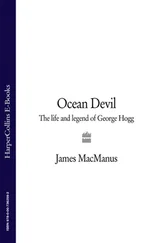Donald Alexander Mackenzie - Indian Myth and Legend
Здесь есть возможность читать онлайн «Donald Alexander Mackenzie - Indian Myth and Legend» — ознакомительный отрывок электронной книги совершенно бесплатно, а после прочтения отрывка купить полную версию. В некоторых случаях можно слушать аудио, скачать через торрент в формате fb2 и присутствует краткое содержание. Жанр: foreign_prose, foreign_religion, Философия, Мифы. Легенды. Эпос, foreign_psychology, foreign_antique, на английском языке. Описание произведения, (предисловие) а так же отзывы посетителей доступны на портале библиотеки ЛибКат.
- Название:Indian Myth and Legend
- Автор:
- Жанр:
- Год:неизвестен
- ISBN:нет данных
- Рейтинг книги:4 / 5. Голосов: 1
-
Избранное:Добавить в избранное
- Отзывы:
-
Ваша оценка:
- 80
- 1
- 2
- 3
- 4
- 5
Indian Myth and Legend: краткое содержание, описание и аннотация
Предлагаем к чтению аннотацию, описание, краткое содержание или предисловие (зависит от того, что написал сам автор книги «Indian Myth and Legend»). Если вы не нашли необходимую информацию о книге — напишите в комментариях, мы постараемся отыскать её.
Indian Myth and Legend — читать онлайн ознакомительный отрывок
Ниже представлен текст книги, разбитый по страницам. Система сохранения места последней прочитанной страницы, позволяет с удобством читать онлайн бесплатно книгу «Indian Myth and Legend», без необходимости каждый раз заново искать на чём Вы остановились. Поставьте закладку, и сможете в любой момент перейти на страницу, на которой закончили чтение.
Интервал:
Закладка:
If we separate the Indra from the Agni, cremating worshippers, it will be of interest to follow the ethnic clue which is thus suggested. Modern-day Hindus burn their dead in accordance with the religious practice of the Agni worshippers in the Vedic Age. It is doubtful, however, if all the Aryan invaders practised cremation. There are references to burial in the “house of clay”, and Yama, god of the dead, was adored as the first man who explored the path to the “Land of the Pitris” (Fathers) which lay across the mountains. Professor Oldenberg considers that these burials referred to the disposal of the bones and ashes of the dead.
Professor Macdonell and Dr. Keith, however, do not share Professor Oldenberg's view in this connection. 17They hold that the epithet Agni-dagdhah , “burnt with fire”, “applies to the dead who were burned on the funeral pyre”; the other custom being burial— An-agni-dagdhah , “not burnt with fire”. They also refer to Paroptah , “casting out”, and Uddhitah , “Exposure of the dead”, which are expressions of doubtful meaning. These authorities add: “Burial was clearly not rare in the Rigvedic period: a whole hymn (x, 18) describes the ritual attending it. The dead man was buried apparently in full attire, with his bow in his hand, and probably at one time his wife was immolated to accompany him.... But in the Vedic period both customs appear in a modified form: the son takes the bow from the hand of the dead man, and the widow is led away from her dead husband by his brother or nearest kinsman. A stone is set up between the dead and the living to separate them.”
The Persian fire-worshippers, on the other hand, did not cremate their dead, but exposed them on “towers of silence” to be devoured by vultures, like their modern-day representatives the Parsees, who migrated into India after displacement by the Mohammedans. In Persia the sacred fire was called Atar, 18and was identified with the supreme deity Ahura-Mazda (Ormuzd).
Agni of the Vedic Age is the messenger between gods and men; he conducts the deities to the sacrifice and the souls of the cremated dead to Paradise; he is also the twin brother of Indra.
Now, it is of interest to note, in considering the racial significance of burial rites, that cremation was not practised by the western representatives of the Brown race. In pre-Dynastic Egypt the dead were interred as in Babylon, 19with food vessels, &c. Neolithic man in Europe also favoured crouched burials, and this practice obtained all through the Bronze Age.
The Buriats, who are Mongols dwelling in the vicinity of Lake Baikal, still perpetuate ancient customs, which resemble those of the Vedic Aryans, for they not only practise cremation but also sacrifice the horse (see Chap. V). In his important study of this remarkable people, Mr. Curtin says: 20“The Buriats usually burn their dead; occasionally, however, there is what is called a ‘Russian burial’, that is, the body is placed in a coffin and the coffin is put in the ground. But generally if a man dies in the Autumn or the Winter his body is placed on a sled and drawn by the horse which he valued most to some secluded place in the forest. There a sort of house is built of fallen trees and boughs, the body is placed inside the house, and the building is then surrounded with two or three walls of logs so that no wolf or other animal can get into it.” The horse is afterwards slain. “If other persons die during the winter their bodies are carried to the same house. In this lonely silent place in the forest they rest through the days and nights until the first cuckoo calls, about the ninth of May. Then relatives and friends assemble, and without opening the house burn it to the ground. Persons who die afterwards and during the Summer months are carried to the forest, placed on a funeral pile, and burned immediately. The horse is killed just as in the first instance.”
When the dead are buried without being burned, the corpse is either carried on a wagon, or it is placed upright in front of a living man on horseback so as to ride to its last resting place. The saddle is broken up and laid at the bottom of the grave, while the body is turned to face the south-east. In this case they also sacrifice the horse which is believed to have “gone to his master, ready for use”.
Cremation spread throughout Europe, as we have said, in the Bronze Age. It was not practised by the early folk-waves of the Alpine race which, according to Mosso, 21began to arrive after copper came into use. The two European Bronze Age burial customs, associated with urns of the “food vessel” and “drinking cup” types, have no connection with the practice of burning the dead. The Archæological Ages have not necessarily an ethnic significance. Ripley is of opinion, however, that the practice of cremation indicates a definite racial infusion, but unfortunately it has destroyed the very evidence, of which we are most in need, to solve the problem. It is impossible to say whether the cremated dead were “broad heads” or “long heads”.
“Dr. Sophus Müller of Copenhagen is of opinion that cremation was not practised long before the year 1000 B.C. though it appeared earlier in the south of Europe than in the north. On both points Professor Ridgeway of Cambridge agrees with him.” 22
The migration of the cremating people through Europe was westward and southward and northward; they even swept through the British Isles as far north as Orkney. They are usually referred to by archæologists as “Aryans”; some identify them with the mysterious Celts, whom the French, however, prefer to associate, as we have said, with the Alpine “broad heads” especially as this type bulks among the Bretons and the hillmen of France. We must be careful, however, to distinguish between the Aryans and Celts of the philologists and archæologists.
It may be that these invaders were not a race in the proper sense, but a military confederacy which maintained a religious organization formulated in some unknown area where they existed for a time as a nation. The Normans who invaded these islands were Scandinavians 23; they settled in France, intermarried with the French, and found allies among the Breton chiefs. It is possible that the cremating people similarly formed military aristocracies when they settled in Hindustan, Mitanni, and in certain other European areas. “Nothing is commoner in the history of migratory peoples,” says Professor Myres, 24“than to find a very small leaven of energetic intruders ruling and organizing large native populations, without either learning their subjects' language or imposing their own till considerably later, if at all.” The archæological evidence in this connection is of particular value. At a famous site near Salzburg, in upper Austria, over a thousand Bronze Age graves were discovered, just over half of which contained unburnt burials. Both methods of interment were contemporary in this district, “but it was noticed that the cremated burials were those of the wealthier class, or of the dominant race.” 25We find also that at Hallstatt “the bodies of the wealthier class were reduced to ashes”. 26In some districts the older people may have maintained their supremacy. At Watsch and St. Margaret in Carniola “a similar blending of the two rites was observed … the unburnt burials being the richer and more numerous”. 27The descent of the Achaens into Greece occurred at a date earlier than the rise of the great Hallstatt civilization. According to Homeric evidence they burned their dead; “though the body of Patroklos was cremated,” however, “the lords of Mycenae were interred unburnt in richly furnished graves”. 28In Britain the cremating people mingled with their predecessors perhaps more intimately than in other areas where there were large states to conquer. A characteristic find on Acklam Wold, Yorkshire, may be referred to. In this grave “a pile of burnt bones was in close contact with the legs of a skeleton buried in the usual contracted position, and they seemed to have been deposited while yet hot, for the knees of the skeleton were completely charred. It has been suggested in cases like this, or where an unburnt body is surrounded by a ring of urn burials, the entire skeleton may be those of chiefs or heads of families, and the burnt bones those of slaves, or even wives, sacrificed at the funeral. The practice of suttee (sati) in Europe rests indeed on the authority of Julius Cæsar, who represents such religious suicides as having, at no remote period from his own, formed a part of the funeral rites of the Gaulish chiefs; and also states that the relatives of a deceased chieftain accused his wives of being accessory to his death, and often tortured them to death on that account.” 29If this is the explanation, the cremating invaders constituted the lower classes in Gaul and Britain, which is doubtful. The practice of burning erring wives, however, apparently prevailed among the Mediterranean peoples. In an Egyptian folk-tale a Pharaoh ordered a faithless wife of a scribe to be burned at the stake. 30One of the Ossianic folk tales of Scotland relates that Grainne, wife of Finn-mac-Coul, who eloped with Diarmid, was similarly dealt with. 31The bulk of the archæological evidence seems to point to the invaders, who are usually referred to as “Aryans” having introduced the cremation ceremony into Europe. Whence came they? The problem is greatly complicated by the evidence from Palestine, where cremation was practised by the hewers of the great artificial caves which were constructed about 3000 B.C. 32As cremation did not begin in Crete, however, until the end of period referred to as “Late Minoan Third” (1450-1200 B.C.) 33it may be that the Palestinian burials are much later than the construction of the caves.
Читать дальшеИнтервал:
Закладка:
Похожие книги на «Indian Myth and Legend»
Представляем Вашему вниманию похожие книги на «Indian Myth and Legend» списком для выбора. Мы отобрали схожую по названию и смыслу литературу в надежде предоставить читателям больше вариантов отыскать новые, интересные, ещё непрочитанные произведения.
Обсуждение, отзывы о книге «Indian Myth and Legend» и просто собственные мнения читателей. Оставьте ваши комментарии, напишите, что Вы думаете о произведении, его смысле или главных героях. Укажите что конкретно понравилось, а что нет, и почему Вы так считаете.












